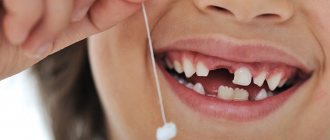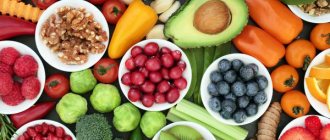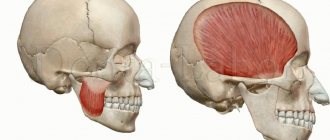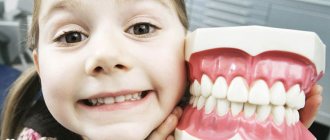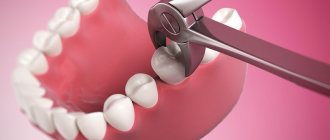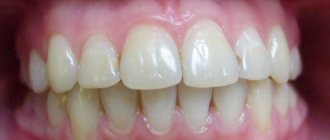The term “diathesis” in domestic medicine refers to a feature of the body’s constitution, which is expressed in a predisposition to certain diseases. Usually, diathesis refers to allergic diathesis, the most common and easily diagnosed. According to various sources, diathesis occurs in 30-75% of children.
Unlike allergies themselves, diathesis is not associated with functional disorders of the immune system. An allergic reaction during diathesis in infants is usually explained by the characteristics of the child’s body. In children of the first year of life, the protective function of the intestine is reduced: the intestinal walls are thin, the amount of enzymes and antibodies produced is small. As a result, the child’s body may not be able to cope with a large number of highly allergenic foods and give an allergic reaction. By two to three years, the amount of enzymes becomes sufficient, and diathesis in most cases goes away.
Symptoms of diathesis
Inflammation of the skin during diathesis is the body's reaction to contact with an allergen. The main way an allergen enters a child’s body is food, but a reaction to contact with the skin of the allergen is also possible (the allergen, for example, can be components of washing powder that get on clothes during washing, plant pollen, dust, animal hair, etc.).
Diathesis in children under 3 months of age
The first manifestations of diathesis most often appear at the age of 2-3 months. This:
- diaper rash that does not disappear even with careful care;
- profuse prickly heat with mild overheating;
- sebaceous crusts of gray-yellow color on the head in the hairline area (seborrhea).
Diathesis in children aged 3 months and older
In older children, a typical manifestation of diathesis is red spots on the cheeks. As the condition worsens, the skin becomes crusty. The crusts become wet, the child experiences discomfort, itches, becomes excitable, sleep and appetite may be disturbed, and loose stools may appear.
Reasons why one half of the face is larger than the other
Many people complain that one side of their face is different from the other. This becomes noticeable when carefully examining yourself in the mirror or in unsuccessful photographs. Some, noticing that their cheeks are different, begin to “sound the alarm” fearing that they are sick.
In fact, slight asymmetry is present in absolutely every person. This is what makes our face alive, unique and inimitable.
To make sure that each person is not symmetrical, you can take several photos of your friends and cut them into two equal parts along the line of the nose in a photo editor. Now one of the right halves is “mirrored” and connected to the other, and we do the same with the left parts. Take such photographs of several people, and you will see that the faces of the right and left halves of the same person are very different.
However, different halves of the face are not always the norm. Let's look at what factors can lead to pathological changes.
Reasons why one side of the face looks very different from the other:
- Improper development of bones and joints, as well as connective or muscle tissue. Such problems can be more or less pronounced, they can only be corrected with proper makeup or plastic surgery.
- Inflammation of the cheek can also lead to its enlargement. After eliminating the problem, the face acquires normal contours.
- Severe strabismus can also develop facial asymmetry. The same applies to torticollis.
- Facial muscles can become severely distorted when nerves become pinched or die. This problem often occurs with strokes and heart attacks.
- An incorrect bite or missing teeth on one side can lead to facial asymmetry. Flux can also cause a similar problem.
- A fracture of the facial bones that did not heal properly.
- The habit of chewing, sleeping or squinting to one side is the most common cause of facial asymmetry.
There are many reasons. Some of them can be avoided by taking timely treatment and controlling your facial expressions.
Methods of treating diathesis
When dealing with diathesis in a young child, the main thing is to choose the right diet, excluding foods that may cause an allergic reaction.
For a child in his first year of life, it is very important to receive breast milk.
The proteins of human milk are easily broken down by the baby's enzymes and are completely devoid of allergic properties. However, a nursing mother must also follow a diet excluding fish, poultry, tomatoes, chocolate, smoked meats, spices and other allergenic foods.
When mixed feeding, the child should not be given some juices: orange, carrot, tomato. Introduce any new product carefully - from a small amount. It is important to prevent an allergic exacerbation, and at the same time, to give the baby’s body everything it needs for its development.
Specialist consultation
The Family Doctor pediatric allergist-immunologist will help you deal with your child’s skin problems, determine the cause of allergies, and also build a rational diet that is suitable specifically for your child.
Make an appointment Do not self-medicate. Contact our specialists who will correctly diagnose and prescribe treatment.
Rate how useful the material was
thank you for rating
Obesity in children. Age stages of development. 7–12 (14 years old)
Murzaeva Irina Yurievna
Endocrinologist, Preventive Medicine Doctor
February 10, 2015
The age interval from 7 years to 12 (14.5 years) is such an uncertain period, it is prepuberty (the time before puberty). The minimum age of onset of puberty is 8 (8.5 years), the latest date of onset is 14.5 years
(more often in boys). It is during this period that gender differences in the dynamics of weight gain appear.
Girls gain weight faster and more than boys, which is associated with an earlier onset of puberty. In general, it is during this period that parents note the onset of obesity; the age most often referred to is 8 years. Apparently, it was during this period that the previously established “wrong eating habits” begin to be clearly realized, “stimulated” by the beginning of the synthesis of sex hormones and the increased pubertal concentration of insulin, a hormone that helps absorb glucose.
There is a lot of insulin, both as a result of the “sexual surge” and as a result of overfeeding. It turns out to be a vicious circle: more insulin means more glucose is absorbed, more glucose means more insulin is produced. It is clear how to break this circle - reduce the consumption of “light” carbohydrates . Otherwise, this age period is intermediate and nothing else special.
An important point about the peculiarities of obesity during this period: if a girl with obesity enters puberty, obesity will cause her a disruption in the formation of the hormonal system; if a boy enters puberty, obesity (unless it is obesity of the 4th degree) will not lead to a significant disruption of puberty .
Testosterone, in this case, is the “magic” hormone. Together with growth hormone (and boys produce much more of it during puberty than girls), they create a good metabolism for “melting fat.” For girls, it's exactly the opposite. The female hormone, estradiol, promotes the absorption of a chain of fatty acids several times faster and their deposition in fat depots.
During this period, it is important to begin to accustom the child to regular sports!, to discipline, to self-discipline. It is always important if a child has an adult example before his eyes. It is important for girls to learn plastic arts - dancing, gymnastics. Boys just need discipline, so the type of sport is not important. The main thing is movement, 3-5 times a week, at least 30 minutes a day.
Now about nutrition. I give an example of a CK1 diet for a given age and a set of permitted products. It is not difficult to see that this diet “echoes” the 8th diet according to Pevzner in adults.
It is necessary to exclude: rich broths, smoked meats, spicy and salty snacks, fatty meats and fish, sausages, sausages, fruit juices, soda, chips, crackers, coffee, daily use of sweets, products with xylitol, sorbitol, cakes, pastries, nuts, seeds, mayonnaise, ketchup and other sauces.
Limit: butter to 2 tsp, olive and vegetable oil to 1 tbsp, soups with 2 broths (do not fry vegetables in soup), potatoes, rice, pasta, potatoes (boiled/mashed) to 6-7 tbsp in cooked form - these are foods that are eaten only at lunch, eggs every 2-3 days in the form of an omelet, bread 2-3 pieces a day (not bourgeois, not whole grain, mostly rye), legumes 2 times a week, fruits up to 3 pieces per day (bananas every 2-3 days, limited grapes), refined sugar 1 piece in tea, 2-3 times a day, marmalade with natural juice - 1 piece or marshmallows 1 piece (as an exception), cookies 2 PC. type “Maria”, jam and preserves no more than 1-2 tsp.
Allowed: vegetables, vegetable soups, lean meat and fish (in the form of meatballs, cutlets), stewed, mainly rabbit, beef, turkey, perch, cod (cutlets), cottage cheese up to 5% fat (natural in the morning, casserole in the evening or cheesecakes), low-fat cheese, cereals up to 6 tbsp. in boiled form (except for semolina, less often wheat), milk, kefir, yogurt up to 2-3 glasses a day.
Eat meals in fractions up to 5-6 times a day.
Sample menu for a child at this age:
Morning: any milk porridge 6-7 tablespoons, boiled meat (or cutlet), bread, slightly sweet tea 200 ml. 2nd breakfast: yogurt 200 ml. Lunch: vegetable salad 100-150 g, soup or cabbage soup 200 ml, boiled chicken 100 g, boiled potatoes 100 g, dried fruit compote 200 ml, rye bread 60 g. Afternoon snack: cottage cheese 150 g, dry rye bread 1 piece, compote, or tea, or vegetable juice 200 ml. Dinner: steamed meat cutlet, boiled cauliflower 200 g, wheat bread 1 slice, tea 200 ml. At night: kefir 150 ml.
Naturally, with different degrees of obesity, the caloric content of the diet is recalculated individually, at this age even without gender differences.
fasting days can be introduced into practice - the child’s body is already ready for this. The bottom line is to reduce the calorie intake to 1000 kcal per day once a week. They usually start with “protein” fasting days - cottage cheese, meat or dairy, then move on to fruit or vegetable fasting days; it is good to use double fasting days: 1st day - protein, 2nd day - carbohydrate. Water is not limited these days.
One of the main factors in the treatment of obesity is suppressing appetite by consuming large-volume, but low-calorie, predominantly protein, monotonous food!
After completing the subcalorie diet stage, when the required weight is reached, a transition to a maintenance diet with the gradual introduction of “forbidden foods”, you can continue the practice of fasting days.
From the age of 9 years, medications can be administered to help a child with a high degree of obesity and pathological hyperinsulenism lose weight. But this issue can only be resolved by a doctor or a council of doctors!
In the age periods 0-1, 1-7, 7-14.5 we are not talking about weight loss, and this is important to understand, but about stopping weight gain (growth continues, weight “stands”), but in the fourth age period - puberty , we will talk about weight loss.
WHAT NOT TO DO IN OBESITY IN CHILDREN (psychological motivation):
Don't tell your child that he is "greedy" or "lazy." Tell him that you understand how difficult it is to make good (“healthy”) dietary choices.
# Don't make your child feel guilty about their eating habits. Praise him when you see him eating properly.
# Don't tell your child that he isn't helping himself. Ask your child how you can help him eat healthy.
# Don't scare your child about losing weight. Tell him that it will be better when he is less heavy.
# Don't complain about your weight and how “boring” it is to diet. Set a good example and do everything as you expect your child to do.
# Don't give negative comments to other people (friends, family, celebrities) who are overweight. Notice everything beautiful about your child: his eyes, his hair, his good deeds, his choice of clothing, etc.
# There is no need to let your child understand that he will only be happy if he is at a normal weight. Talk to your child about the positive effects of working on your weight.
# Don't tell your child that being overweight is his fault. Explain that some people have a harder time controlling their weight than others - life can be unfair, but maybe they are lucky in other things!
I also want to talk about such an interesting topic as Tanita scales with analyzers of fat and water in the body. If they are at least somehow adapted to adults, then they “do not work” for children , because the WHO (World Health Organization) has not yet fully developed acceptable standards for fat/water content in the body of children of different ages. Therefore, it will not be possible to independently control these parameters, sadly.
If they are at least somehow adapted to adults, then they “do not work” for children , because the WHO (World Health Organization) has not yet fully developed acceptable standards for fat/water content in the body of children of different ages. Therefore, it will not be possible to independently control these parameters, sadly.
To be continued...... in the next part I will talk about excess weight, already separating the obesity of girls and the obesity of boys during puberty.

